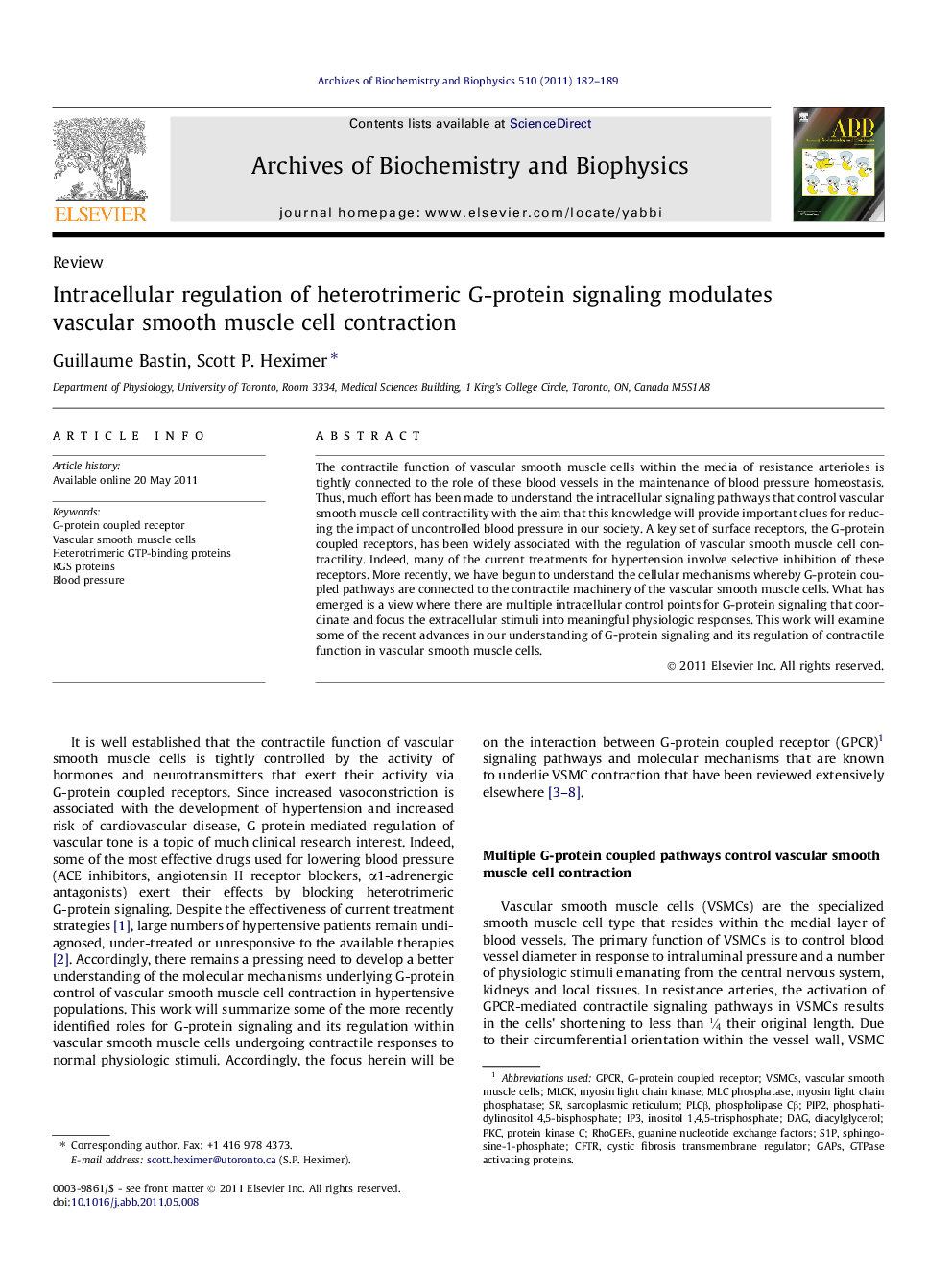| Article ID | Journal | Published Year | Pages | File Type |
|---|---|---|---|---|
| 1925738 | Archives of Biochemistry and Biophysics | 2011 | 8 Pages |
The contractile function of vascular smooth muscle cells within the media of resistance arterioles is tightly connected to the role of these blood vessels in the maintenance of blood pressure homeostasis. Thus, much effort has been made to understand the intracellular signaling pathways that control vascular smooth muscle cell contractility with the aim that this knowledge will provide important clues for reducing the impact of uncontrolled blood pressure in our society. A key set of surface receptors, the G-protein coupled receptors, has been widely associated with the regulation of vascular smooth muscle cell contractility. Indeed, many of the current treatments for hypertension involve selective inhibition of these receptors. More recently, we have begun to understand the cellular mechanisms whereby G-protein coupled pathways are connected to the contractile machinery of the vascular smooth muscle cells. What has emerged is a view where there are multiple intracellular control points for G-protein signaling that coordinate and focus the extracellular stimuli into meaningful physiologic responses. This work will examine some of the recent advances in our understanding of G-protein signaling and its regulation of contractile function in vascular smooth muscle cells.
► We examine the molecular mechanisms that regulate vasoconstrictor signaling in vascular smooth muscle cells. ► We focus on intracellular control points for G-protein signaling, a key modulator of contractile function. ► We explore the potential therapeutic targeting of G-protein regulators as new strategies for the treatment of hypertension.
